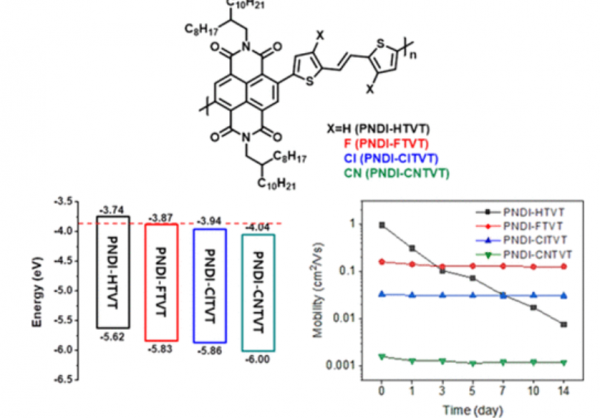Highly Ambient-Stable Organic Thin-Film Transistors Fabricated Using Naphthalene Diimide and Thienylene–Vinylene–Thienylene-Based n-Type Polymers with Different Electron-Withdrawing Groups
- 저자
- Dahye Kim, Huihui Zhu, Ao Liu, Hee Su Kim, Yong-Young Noh*, Do-Hoon Hwan*
- 저널명
- The Journal of Physical Chemistry C, 124, 38, 20784–20793 (2020)
- 년도
- 2020
- Link
- https://doi.org/10.1021/acs.jpcc.0c06531 537회 연결
[Abstract]
We designed, synthesized, and characterized a series of naphthalene diimide (NDI)-based polymers with pristine (H)-, fluorine (F)-, chlorine (Cl)-, and cyano (CN)-substituted thienylene–vinylene–thienylene (TVT) moieties. The theoretical and experimental results showed that a stronger electron-withdrawing group in the TVT unit reduces the energy of the lowest unoccupied molecular orbital (LUMO), which could enhance the air stability of NDI-based organic thin-film transistors (OTFTs). However, this improved stability was accompanied by a reduction in electron mobility to various degrees. The reason is that the F, Cl, and CN moieties increased the dihedral angles in the polymer structure and raised the activation energy and the width of density of states (DOS) in the device systems. We believe that a clear understanding of the mechanism will assist in the design of n-channel OTFTs with both high mobility and high ambient stability.
